Chicago Fire has been around forever—since 2012, actually. It’s not just your garden-variety firefighter drama, either. The show is the heart of NBC’s One Chicago empire. Derek Haas and Michael Brandt cooked it up, but Dick Wolf made sure it gor popular. Fourteen seasons on deck, over 270 episodes, and NBC probably has it set to run forever.
What makes Chicago Fire tick is not just the fireballs and burning buildings; it’s that mix of high-octane rescues with all the relatable life stuff. Everyone at Firehouse 51—Engine 51, Squad 3, Truck 81, Ambulance 61—feels like a real person. They shoot the episodes in actual Chicago spots too, which, fun fact, makes the city look freezing even in the “spring” episodes.
They even drag in real firefighters to keep things legit, so you’re not just watching pretty faces pretending to know what a hose is.
Chicago Fire fandom is known to be global. People gush about how it nails the struggles and the bonds between first responders. Furthermore, nobody shies away from the hard aspects of the job: trauma, grief, and the sort of tight-knit community that comes to existence only when people are saving each other’s lives every shift.
Hence, it is the characters of Chicago Fire that make you keep coming back. Let’s break down the squad:
Casey (Jesse Spencer):
He is the definition of “steady.” The kind of guy you’d trust with your life. He’s had his share of heartbreak and drama, but he always tries to do what’s right, even when it costs him.
Severide (Taylor Kinney):
Basically, the cool guy with epic hair. Bit of a wildcard, but if you’re trapped in a burning elevator, pray this guy shows up. He’s loyal, a little reckless, and his personal life is a mess, but that’s half the fun.
Boden (Eamonn Walker):
The chief with gravitas. He’s like the dad of the house—tough, wise, but also the first to call you out if you screw up. Firehouse 51 would fall apart without him.
Brett (Kara Killmer):
Came in later, but slotted right in. She’s super caring, a little wide-eyed, but tough when it counts. The paramedic you want when things go sideways.
Herrmann (David Eigenberg):
Grumpy, hilarious, and always hustling—he co-owns Molly’s Bar, so half the drama ends up there.
Cruz (Joe Miñoso):
Guy’s had a rough ride but turned it around. Family drama, old mistakes, but now he’s rock solid. Gets some of the most gut-punching stories.
And don’t forget the rest—Mouch, Stella, Violet, and a whole crew that keeps things spicy (and sometimes a little soapy).
The point is, Chicago Fire isn’t just a show about fires. It’s about people—flawed, brave, occasionally ridiculous—and the weird, wild, close-knit family beyond blood they’ve built inside Firehouse 51.
Every episode is kind of like juggling chainsaws—wild rescues are flying in from all sides, somebody’s always bleeding out on a stretcher, and the drama is always off the charts. You get these moments where the crew’s just trying to save lives, but then some scandal pops up, and someone has to go and be dealing with their demons.
Chicago Fire doesn’t just crank out high-stakes drama and spicy character arcs—it’s got sneaky little details tucked in everywhere. If you blink, you’ll miss half the inside jokes, callbacks, and random Easter eggs the writers bury in there.
Even if you’ve binged every episode twice, there’s a good chance you missed a few gems hidden around Firehouse 51. So, here’s the list of seven of those blink-and-you’ll-miss-it moments, and why they actually matter for the bigger story.
Hidden details about Firehouse 51 in Chicago Fire
The real-life firehouse behind Firehouse 51
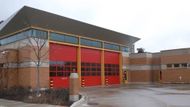
Those exterior shots of Firehouse 51 on Chicago Fire are not some cardboard Hollywood set put together. They roll cameras right at Engine 18’s real firehouse, tucked away at 1360 S. Blue Island Avenue. The place is where actual firefighters work, and it’s been standing tall since the days after the Great Chicago Fire wiped out half the city in 1871.
While watching the show, you’ll spot that firehouse in pretty much every episode—it’s the show’s home base. And if you think about it, it is kind of wild how it roots the whole thing right in the middle of Chicago, instead of some generic TV city.
Plus, sometimes they sneak real firefighters into scenes as extras, which just elevates the sense of realism even more. Chicagoans dig it, tourists hunt it down for selfies, and anyone who’s into emergency services gets an extra kick out of knowing the backdrop is the real deal.
So, using Engine 18 is more than just a cool location—it’s a shoutout to Chicago’s hardcore firefighting history, blurring the line between fiction and reality.
Molly’s Pub connection to real Chicago
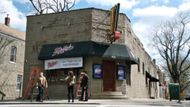
Molly’s Bar, the cozy spot where the Chicago Fire gang kicks back after saving the day, is not just some made-up TV hangout. They film those scenes at real-life Lottie’s Pub over in Bucktown, Chicago. The place is a total local institution, not just a Hollywood backdrop.
Molly’s pops up right from the get-go, season one, and it’s like the show’s unofficial clubhouse. Birthdays, heartbreak, epic life messes—Molly’s sees it all.
And people in Chicago have kind of adopted Lottie’s as the real-deal Molly’s. You’ve got fans making the pilgrimage, staff leaning into the whole thing, selfies galore. It’s this awesome blend of television magic and real-life community.
Firehouse 51’s badge numbers and their hidden meanings
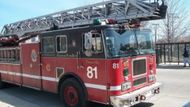
Those numbers plastered all over Firehouse 51’s gear—Engine 51, Truck 81, Squad 3, Ambulance 61—they aren’t just random digits someone picked out of a hat. Each has an actual meaning behind.
For instance, “Engine 51” is a shoutout to that old-school show Emergency! from the ‘70s. The one with Station 51 in LA.
You’ll spot these numbers everywhere in Chicago Fire—on the trucks, stitched into the uniforms, slapped on anything that’ll hold still. It’s kind of a wink to the OGs, the actual people who do the heroic stuff on an everyday basis for real.
This ties Chicago Fire to this whole legacy of firefighting stories and makes you wanna high-five a firefighter next time you see one.
The long shadow of Cruz’s secret
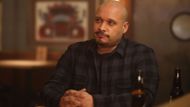
Back in Season 1, Cruz gets stuck in this insane situation—he’s got Flaco, big-shot gang leader, trapped in a burning building. And, Cruz could save the guy, but Flaco’s been gunning for Cruz’s brother, Leon. So Cruz leaves Flaco to burn. But the guilt hangs around his neck for years.
Fast forward to a dozen seasons, Flaco’s cousin, named Junior, gets out of prison and comes knocking, ready to blow Cruz’s secret sky-high.
The writers don’t just drop the plot and forget about it. They drag Cruz’s choices back up, years later, to smack him in the face. Makes the show feel way more real. Nobody just walks away from that kind of decision, and Cruz has got layers.
This isn’t just some firefighter drama where everyone’s a hero—sometimes they’re just trying to live with what they’ve done.
Easter eggs from the Great Chicago Fire
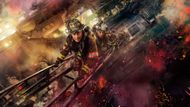
References to the Great Chicago Fire of 1871 keep coming up all over the show. Sometimes they just drop it right on your face, other times the references are made through subtle visual and narrative cues. For instance, the history of Engine 18 is not just TV magic; it’s an actual piece of Chicago’s comeback story after the whole city went up in smoke.
And, no joke, there are episodes where the crew gets all nostalgic, talking about the old days or digging out some artifact from the fire.
You’ll notice these throwbacks scattered through the show, but they go all-in when an episode dives into Firehouse 51’s past or the city’s big anniversary. It gives the whole thing a little more grit and makes the firehouse feel legit.
Subtle character backstories revealed through set design
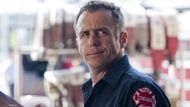
The set decorators at Firehouse 51 nail every tiny detail. You wander through the place, and there’s personal stuff shoved in lockers and tacked up on walls. You’ll spot nods to Herrmann hustling some side gig, Brett’s whole Midwestern vibe, Severide’s complicated family tree—it’s all lurking in the background if you pay attention.
These Easter eggs aren’t just sprinkled in for kicks. When the show dives into big character moments—someone scoring a promotion, saying goodbye, totally losing it—you notice how these background stories ramp up. It’s like the set itself is in on all the drama.
The bottom line is that this subtle decorating wizardry pays off for anyone watching closely. It makes the place feel lived-in.
Crossover clues and interconnected storylines
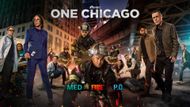
Chicago Fire is the king of TV crossovers. It can’t go five episodes without bumping into Chicago P.D. or Chicago Med. Sometimes, even Law & Order: SVU pops in for a cameo. The show drops sneaky little hints before the big crossovers, and most people don’t even catch on.
Some of these crossovers are iconic. Take the example of Season 1, Episode 23. It was basically the pilot for Chicago P.D., hiding in plain sight. Or that wild “Infection” trilogy where you had to hop between Chicago Fire Season 8, Med Season 5, and P.D. Season 7 just to keep up.
The whole point of these little Easter eggs and crossovers is, besides keeping us on our toes, it ties together all the shows together into this massive universe. You get sucked in and then you’re binge-watching three series at once because you just HAVE to know what happens to these characters.
